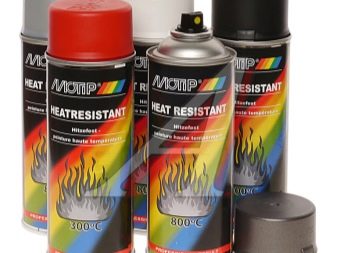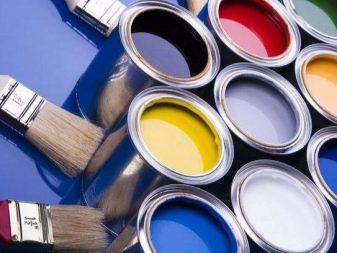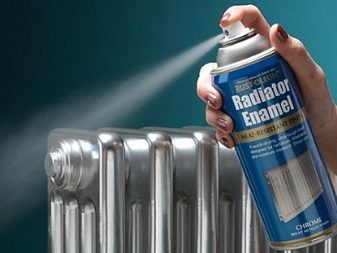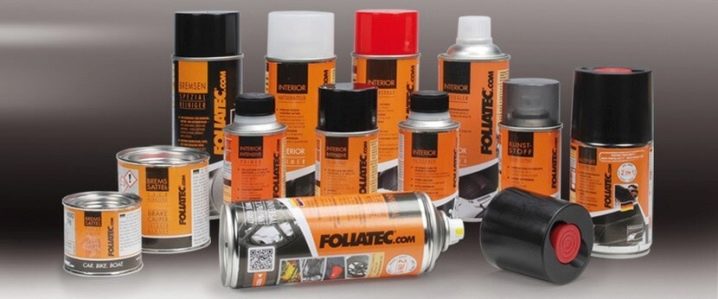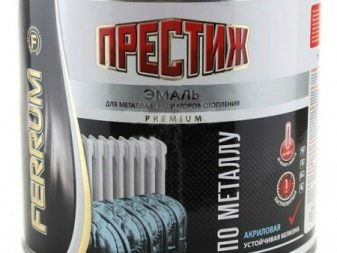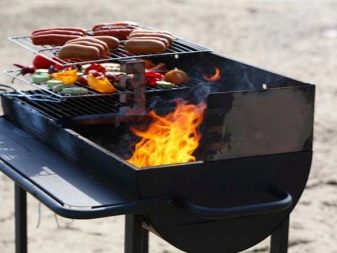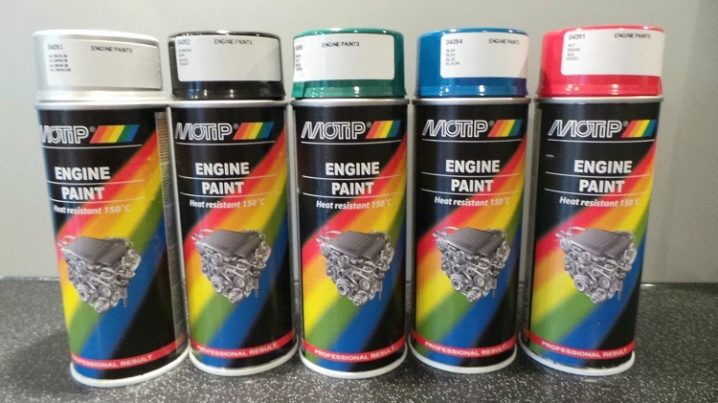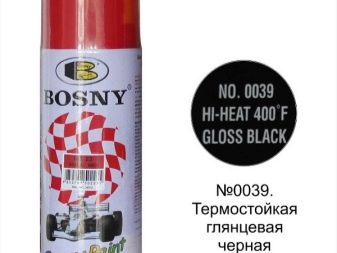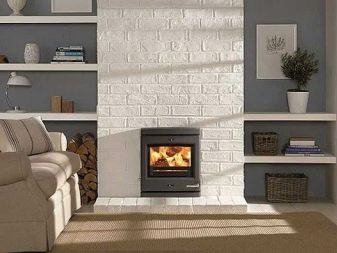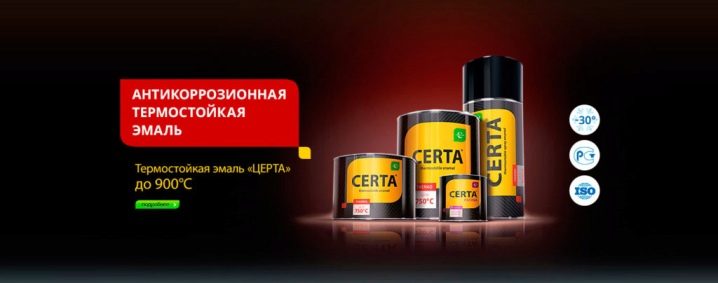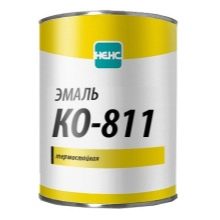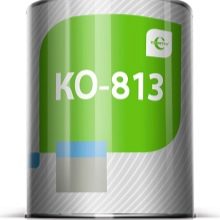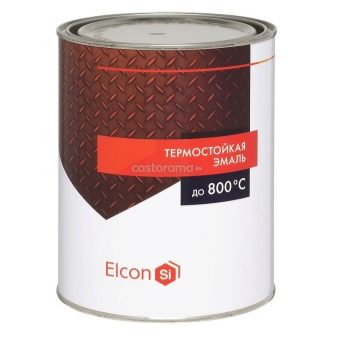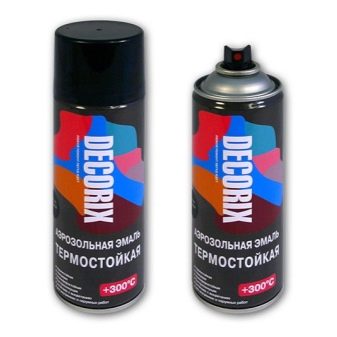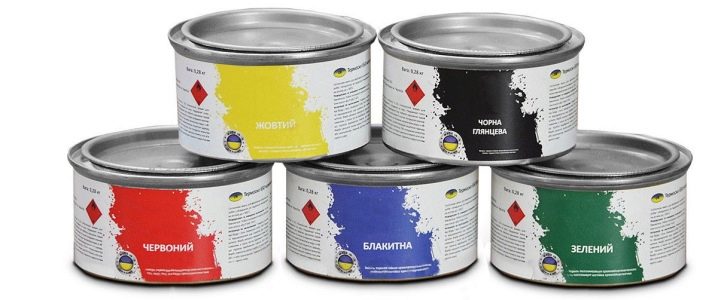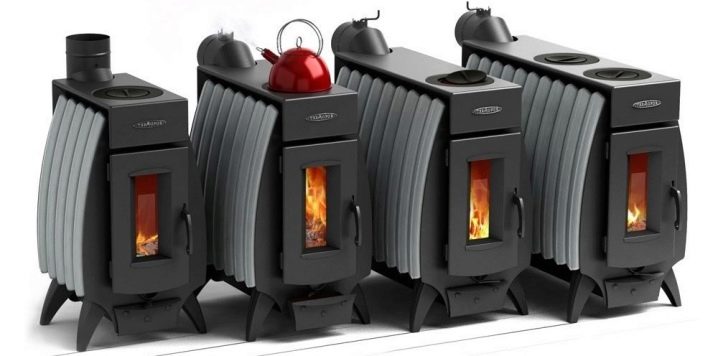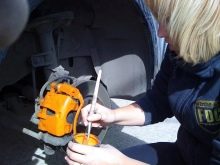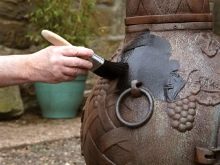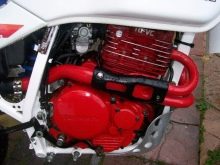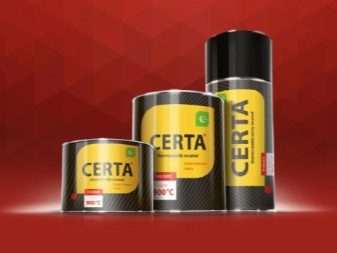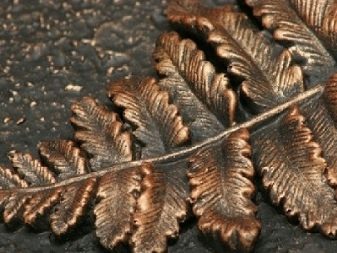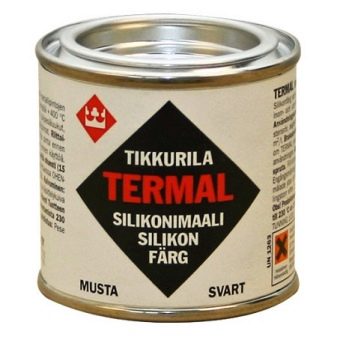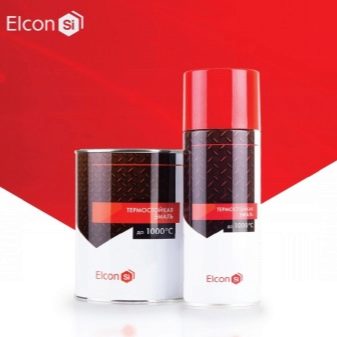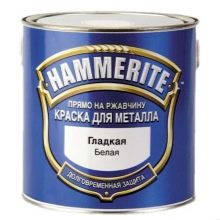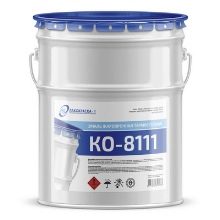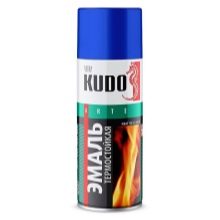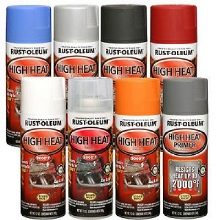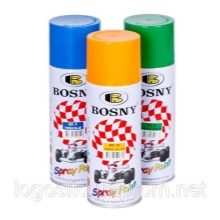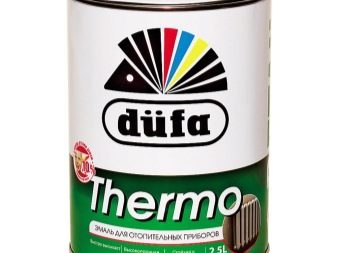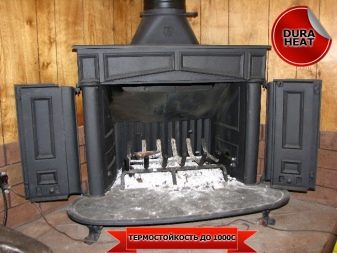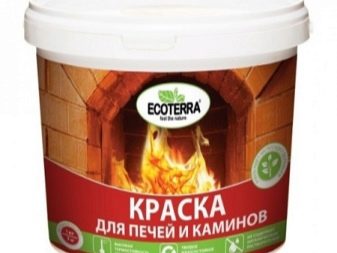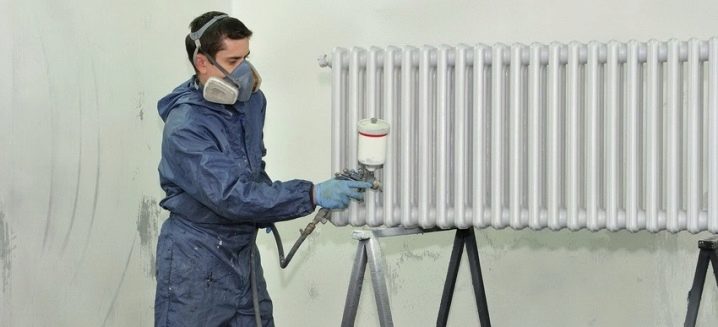Heat-resistant paints: advantages and scope

In some cases, it is necessary not only to change the color of any interior item, equipment or construction object, but also for its decor to have a certain degree of resistance to external influences, more precisely, to elevated temperatures. This problem often occurs when painting stoves, gas equipment, barbecues, radiators, transformers, etc. For these purposes, special paint and varnish compositions have been developed that withstand high temperatures and prevent the destruction of materials.They are called heat resistant.
Do not confuse them with fire retardant and fire retardant paints. Heat-resistant or fire-resistant paint withstands high temperatures, fire-retardant prevents the burning process, fire-bioprotective - protects the wood from burning and the action of natural factors (rotting, fungi, insects).
Features and benefits
Heat-resistant paint and varnish compositions are made on a silicone-based basis with the addition of special fillers to improve the heat resistance and color. When applying such paint on the surface on it creates a durable, but at the same time, an elastic coating that protects against high temperatures.
The property of heat resistance is achieved due to the following properties of the components of the paint:
- Good resistance to temperature of the base, consisting of silicon, oxygen and organic matter;
- High elasticity and good adhesion of organorganic resins;
- The ability of aluminum powder to withstand heat up to 600 degrees.
The service life of heat-resistant paint coating is about fifteen years.The degree of strength, adhesion, elasticity and duration of drying depend on how many organic resins are present in the paint and how it is applied.
Properties of heat-resistant compositions:
- Plastic. This is a very important quality, because when heated, the metal, as is well known, tends to expand, and the paint, respectively, must expand with it;
- Electroinsulating properties. This property is particularly important when it is necessary to paint surfaces that can conduct electricity;
- High anti-corrosion characteristics. Heat-resistant compounds perfectly cope with the prevention of rust on metal surfaces;
- Preservation of the original qualities at different temperatures, both low and high.
The advantages of heat-resistant paints (in addition to resistance to high temperature):
- Resistance to severe temperature extremes;
- Preventing the destruction of the base material of the product under the colorful coating;
- Good grip performance. It does not form cracks and peeling;
- Providing an attractive appearance of the object on which they are applied;
- Ease in care of a paint and varnish covering;
- Resistance to the effects of abrasives;
- Additional protection against corrosive effects, including corrosion.
Classification and composition
Fire-resistant coating compositions are classified according to various parameters.
By composition
- Alkyd or acrylic are household compositions that are able to withstand temperature effects of no more than 80-100 degrees. Zinc compounds may also be included. Designed for use on heating radiators or boilers;
- Epoxy - resistant to temperatures of 100-200 degrees. These compounds are made using epoxy resin. Before applying epoxy paint it is not necessary to apply paint-primer;
- Epoxy ether and ethyl silicate - resistant to temperatures of 200-400 degrees, made on the basis of epoxy ether or ethyl silicate resins. In some cases, they include aluminum powder. Suitable for application to the surface of cooking appliances on fire, such as barbecues or barbecues;
- Silicone - resistant to temperatures up to 650 degrees. The basis of the composition are polymeric silicone resins;
- With composite additives and heat-resistant glass. The limit of heat resistance is up to 1000 degrees. Used most often in industry.
In appearance formed coating
- Glossy - form shiny surfaces;
- Opaque - create surfaces without gloss. More suitable for surfaces with irregularities and defects, because they help to hide them.
By degree of protection
- Enamel - forms a vitreous decorative layer on the surface being treated. It is quite elastic, but it creates an increased risk of spreading fire in case of fire;
- Paint - forms a smooth decorative layer with higher flame retardant qualities;
- Varnish - forms a glossy transparent coating on the surface. It has high protective properties when exposed to open flame.
By marking
- KO-8111 - the dye intended for drawing on metal surfaces which heat up to 600 degrees. It has a high degree of resistance to aggressive environments;
- KO-811 - the dye used for the treatment of steel, titanium and aluminum surfaces, forms a durable anti-corrosion, heat and moisture resistant, environmentally friendly, resistant to thermal drops coating, which with increasing temperature becomes even more dense;
- KO-813 - the dye used for deposition on metal surfaces heated to 60-500 degrees has high anti-corrosion characteristics and is resistant to temperature extremes;
- KO-814 - it is intended for the surfaces heated to 400 degrees. It is frost-resistant, resistant to the action of petroleum products, mineral oils, salt solutions. Most often used for painting steam lines.
Forms of release
Heat-resistant paint can be produced in different forms, thanks to which it is convenient to use it for painting a wide variety of surfaces.
The main ones are:
- Paint designed for application by brush or roller. It is usually bottled in jars, buckets or drums, depending on the volume. It is convenient to purchase paints in such packaging, if it is necessary to paint sufficiently extensive surfaces;
- Spray can. The compositions are packaged in cartridges. Paint is applied by spraying. When painting it is evenly distributed over the surface. Aerosol packaging is convenient when handling small areas, especially hard-to-reach places. To work with aerosol formulations do not need special skills and tools.
Such paints do not thicken and retain their properties even during long-term storage.
Colors
Usually, when choosing colors for dyeing with heat-resistant dyes, preference is given to a limited set of colors. The most commonly used are black, white, silver (the so-called "silverfish") or chrome colors. Although many manufacturers today offer more interesting colors that will help to create unusual, but at the same time functional decors, for example, red, blue, orange, crimson, brown, green, gray, beige.
But it must be remembered that if the dye is used to decorate the furnace, then it is better to use dark colors - this way the furnace warms up faster, and this leads to fuel savings - wood or coal.
Application
Heat-resistant compositions are used to treat surfaces from various materials that are exposed to heat or are used in conditions where high temperatures occur, namely, metal (most often), brick, concrete, glass, cast iron, plastic.
Such paints are most often used for dyeing:
- Brick and metal stoves in saunas, wooden baths;
- Fireplaces;
- Drying chambers (refractory compounds are used that can withstand exposure to 600-1000 degrees;
- Indoor heating radiators;
- Heating parts of machine tools;
- Braziers and barbecue;
- Box of geysers;
- Boilers;
- Doors at the stoves;
- Chimneys;
- Transformers;
- Brake calipers;
- Steam lines;
- Electric motors and their parts;
- Silencers;
- Headlight reflectors.
Brands and reviews
In the market of heat-resistant dyes today, a fairly large number of brands. Many companies that produce conventional paints, are in the product line and are resistant to high temperatures compounds.
The most popular of them are:
- Certa. Heat-resistant enamel, developed by the company "Spectrum", is designed for surface treatment, heated to 900 degrees. The color palette is presented in 26 colors. The most stable is black enamel. Color compositions are less heat resistant. White, copper, gold, brown, green, blue, blue, turquoise enamels withstand up to 750 degrees. Paints of other colors - 500. Such dyes can be used in any premises, including baths and saunas.According to consumer reviews, this dye dries quickly and has a long service life. The compositions are easy to apply and are sold in convenient containers at a fairly reasonable price.
- Termal - alkyd paint from the famous brand Tikkurila. Primary colors - black and silver. It can be used on metal surfaces to a temperature when the metal is heated up to red. This composition is a good option for surface treatment in baths. Consumers of this product notes a rather high price of paint, as well as a short service life (about three years). In addition, the drying of the surface should take place at a temperature of 230 degrees, which will allow the coating to finally polymerize.
- Elcon. The products of this company are designed specifically for Russian climatic conditions. Heat-resistant enamel is most suitable for interior work, because it does not emit harmful substances into the air. She usually painted fireplaces, chimneys, stoves, pipes. Primary colors - black and silver.
The advantage of this paint is that the composition can paint the surface even at sub-zero temperatures and in the presence of an electrostatic field.
- Hammerite. Paint designed specifically for metal processing. An additional advantage of the composition is that it can be applied without prior preparation of the surface, directly on the rust. According to reviews, the composition is unstable to the effects of gasoline, grease, diesel fuel. Paint can be applied to surfaces heated to 600 degrees.
- Thermal KO-8111 - heat-resistant composition that can withstand heat up to 600 degrees. The dye also protects the painted surface from stray currents, the action of salts, chlorine, oils and other aggressive substances. Suitable for painting fireplaces and stoves, also suitable for baths, because it has anti-corrosion properties.
- Russian dye Kudo can withstand temperatures up to 600 degrees. The color palette is presented in 20 colors. Available in aerosol form.
- Dye Hansa also available in aerosol cans, as well as in buckets, cans and barrels. The color palette has 16 colors. Thermal stability of the composition - 800 degrees.
- Rust-Oleum - the most heat-resistant paint that can withstand temperatures up to 1093 degrees. Resistant to gasoline and oils. The main container - spray cans.The colors are matte white, black, gray and transparent.
- Bosny - heat-resistant composition in the form of an aerosol of two types, resistant to exposure to 650 degrees. The composition of the dye includes alkyd resins, styrene, tempered glass, which makes it possible to use the paint, including in wet rooms. The consumer appreciated such qualities of this composition as quickness of drying and the absence of the need for preliminary priming of the surface.
- Dufa - German alkyd dye from the company Meffert AG Farbwerke. Contains white spirit, titanium dioxide, various additives. Dyufa is used to paint metal surfaces and heating systems. The peculiarity of the paint is that it allows to distribute extremely high temperatures over the painted surface and thereby protect the painted object from overheating.
- Galakolor - Russian heat-resistant epoxy paint. It has good resistance to temperature fluctuations and low price.
- Dura heat - a refractory dye that can withstand surface heating up to 1000 degrees. The paint contains silicone resin and special additives that provide a high level of resistance to elevated temperatures.This universal composition can be used for painting barbecues, stoves, boilers, heating boilers, exhaust pipes in cars. In consumer reviews of this dye, low product consumption is noted.
How to choose?
The degree of heat resistance determines the limiting temperature that the painted surface can withstand without changing its appearance. Resistance to temperature depends on the operating conditions of the object being painted. For example, a metal stove heats up to 800 degrees, and heating radiators in apartment buildings up to 90.
Refractory, heat-resistant and heat-resistant dyes are used to cover the heating surfaces. Heat-resistant paints are used for temperatures not exceeding 600 degrees (metal furnaces or metal elements of furnaces, but not in a sauna). Refractory compounds are suitable for products whose operating conditions suggest the presence of a number of sources of open fire. At medium temperatures (no more than 200 degrees) high-temperature paints are used. They are suitable for painting engine parts, brick stoves, radiators and heating pipes.Heat resistant lacquers are suitable for medium temperatures and can withstand heat up to 300 degrees. More decorative they look on brick surfaces, giving them shine and brilliance.
The composition of the paint is of particular importance if the dye is chosen for indoor work with people. In such cases, you should look at the compositions with non-toxic components. In addition, the composition of the product indicates what temperature it withstands. For example, heat-resistant paint with a temperature resistance of more than 500 degrees indicated on it cannot but contain metallic powder (aluminum or zinc)
The presence or absence of anti-corrosion properties is also an important factor when choosing. So, for painting heaters in saunas or baths it is required that the paint not only withstands the high temperature, but also protects the metal equipment from moisture.
Time to the final drying of the paint should not exceed 72 hours.
Today, the market also presents universal colorful compositions that are resistant to thermal effects, which can be used for different types of surfaces.After dyeing, they create a reliable air and moisture barrier film on the surface.
Thus, in order to choose the right heat-resistant paint, you need to carefully read its description, find out its purpose, consult the seller, read reviews from other consumers and builders.
The consultants of manufacturers or representatives of a particular brand can also assist. It is enough just to describe the situation to them and tell what exactly it is necessary to paint. As a result, in a few minutes you can get specific recommendations that will facilitate the search and choice of paint.
In the next video you will find a review on heat-resistant paint.

